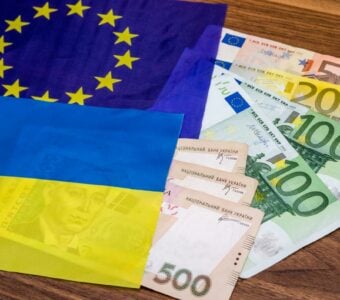Invest in beauty and profit: how to invest in art
Over the last decade, rising prices for art pieces have outpaced rising prices for other conservative assets. How to make purchasing artworks a profitable business?

Photo Unsplash
Art strengthens its position in the investment market every year. Despite the problems such as the low level of accompanying services (such as insurance), investing in art pieces using the right approach can provide multiple financial benefits. Although it's an industry of sensory perception, with art investment, the crucial thing is a competent approach.
Thanks to the system and services of art banking, which appeared in the late twentieth century, the possibility of developing this field has increased. It's a financial and consulting support for investments in art, which includes an expert evaluation of artworks, selection, and creation of individual collections of paintings, icons, their restoration, and insurance.
This field pioneers were Swiss, German, and American banks. Even Ukrainian banks (for example, Alfa-Bank, OTP Bank, Privatbank, Raiffeisen Bank Aval, Ukrsibbank, and VAB Bank) provide art banking services, offering to look at art as an object of investment.
The art-banking package also includes depository (preservation), restoration, and analytics services. However, most collectors perceive art banking as an image business, not a commercial one.
Basic rules of art investing:
- Awareness is your key tool. Navigating in art trends, art history, and market situation.
- Predicting. Determining the value is complicated. It depends on subjective factors.
- Rationality of risk. Works of art have low liquidity. This isn't a business of quick profit in the short term.
- Security. Be prepared for the extra costs of preserving a collection.
- Need for a long-term strategy. The art investment market focuses on privileged clients, as it requires significant capital, which for a long time turns into liabilities.
- Caution and legal justification of the investment. Don't invest without examining, so as not to come across replicas or scams. Only original works have prestige on the market.
WHAT KIND OF ART TO INVEST FUNDS IN?
The question is the most difficult, and for art banking, it's the key one.
The key thing not to forget is that any work associated with your art piece is long-term. It is unlikely that 5-10% per year will enrich you, but in 10-15 years, the price will explode. According to international art consultants, the optimum investment period should be 5-10 years.
Meanwhile, 5-10% of the annual price increase is an accepted pallid statistic, and sharp rises result from unmotivated emotions.
The key to art investment success is the correct choice of purchased works' direction and the time of concluding the contract.
Example. The penult owner of Paul Cezanne's Quarry Bibémus bought the post-impressionist canvas for $3.19 million. After three years of owning the painting, he put it up for auction at Sotheby's. The sale price was $6 million. After deducting the seller's commission, net profit reached 2.76 million, respectively, 27.75% per annum.
– Painting is traditionally considered the most profitable area in the art and antiques market. It occupies about 75% of the market.
In particular, the win-win investment now is the paintings of Russian artists of the late 19th – early 20th century. The most stable and profitable are the paintings of prominent Dutch and Flemish masters of the 17th century. Soviet period works are gradually gaining popularity but still belong to risk assets (the most promising painters are Anatoly Zverev and Martiros Saryan). However, the most intensely rising field is the sphere of expensive paintings (for example, the most popular Russian artist Ilya Mashkov can count on +70-100% yield in the next few years).
Canvases worth up to 100 thousand dollars usually increase in price by no more than 15% per year.
The difference in the cost of different paintings by one artist can be significant (for example, the cost of works by Konstantin Korovin: Grand Opera is 80 thousand dollars; A Street Scene in Nice is 330 thousand dollars; The Picnic is 1.5 million dollars).
Besides painting, you can invest in:
– coins. Numismatics, in the middle price category, is one of the most profitable areas. Under favorable conditions, the increase in value can be 30-40%.
On the plus side, it's a well-studied industry, so it has lower risks, doesn't require significant investment in maintaining the collection (small space will suffice); high liquidity.
A disadvantage is a significant number of counterfeits (up to 70%) and small market capacity.
– antique books. The value indicator is circulation. The most interesting are thematic publications or works of classic authors. Especially highly valued are the first and lifetime editions of the authors, gift, and illustrated books in exclusive covers, bookplates made according to customized order.
A separate layer of antique books is ones with marks and gift inscriptions made by the author; they are very rare.
An important preservation degree of the book, like a damaged cover, creased backbones, torn and missing pages, will reduce the cost by 100-200%.
This investment's major disadvantage is the small number of specialists and, as a result, the lack of forecasts.
The plus: counterfeiting is complex and expensive, economically impractical, so there are very few fakes on the market. However, liquidity is very low. Maintaining the collection, one should keep the concept: authorship, publisher, period, type. The popularity of this investment is growing.
– photos. The key components of a photograph's price are the statement of an author or person in the photo, rarity, and age. This segment is still underdeveloped; trade is mostly through the Internet. It's important to control the photo's circulation. In February 2006, they set a record sale in this segment. At Sotheby's auction, the picture of "The Pond—Moonlight" (Edward Steichen, 1904) went for 2.8 million dollars. This segment is most popular in New York. Market favorites are photos of royal families.
HOW TO INVEST FUNDS IN YOUR OWN COLLECTION?
Step 1. Search
The stage of finding and buying a painting or any work of art that you consider an investment takes the longest time. It's difficult to find a piece with real historical and artistic value.
- it's better to search at exhibitions, museums, and auctions
- you should never take someone's word that the picture they're trying to sell to you with no documents is really valuable
- if you don't have enough knowledge and background, it's advisable to seek the help of experts. The cost will pay off.
Step 2. Expert assessment
Thanks to the examination, it'll be clear what the artwork's value is, what your chances to keep and increase the invested funds are.
- Required minimum questions you should get answers to – Who is the author? In what country was it created? At what time? What kind of school and style? You can learn this info after the examination.
- The examination must conduct all inspection factors and issue a certificate
- Analysis of the work's authenticity. The cost of services depends on the complexity, time, and required documents. The average price tag is $35 for 1 hour.
Step 3. Transportation
Transportation to the destination. Works of art require prior preparation and packaging.
- Calculating the service is individual, depending on the number of items used for packaging, the number of specialists, and the work's complexity.
- The cost depends on the destination, method, and time (the rate increases for each hour)
- In addition, it's necessary to pay for loading and unloading (if the purchase is large-format), rigging services, installation of items, registration of documents for transportation
Step 4. Security
The best way to secure an expensive purchase is to obtain insurance.
- You'll require an additional assessment of the object.
- Analyzing the collection with the price exceeding 1 million costs $10-15 thousand
- The insurance policy will be less than 1% of the insured amount
Step 5. Storing
Given that it's a long-term investment, this is the last and most important stage.
- Installation of alarm and security
- Cost calculations are made individually, depending on the number and availability of video surveillance, security, fire safety, etc.
Following this step-by-step procedure will help you gather an excellent collection or start your art business. Later, if you want to sell the purchased works, you can turn to art dealers who will help you do everything quickly and with the greatest benefit. If you consider yourself competent, you can try it yourself. There are many platforms for sale: auctions, other collectors, museums, and exhibitions.
Again, remember that art doesn't rise in price quickly, and there's no guarantee that the painting you bought will be valuable, unfortunately. But if you really enjoy art, and you have enough patience and opportunity to take risks, this business is for you.
Photo: unsplash.com


























































